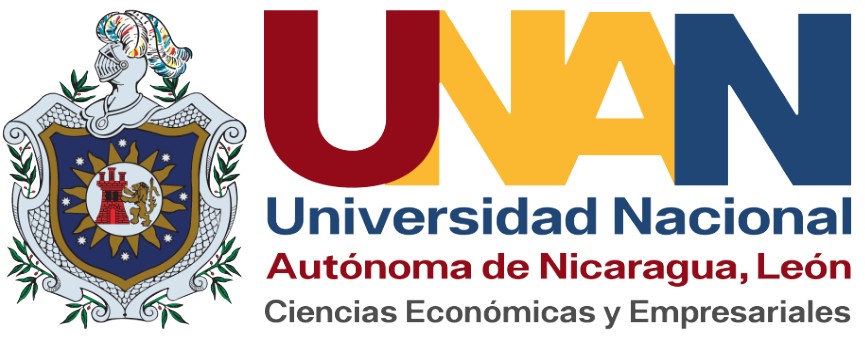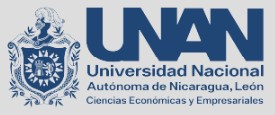Determination of packaging and augmented reality: a strategic and educational approach
DOI:
https://doi.org/10.5377/aes.v3i2.15490Keywords:
Packaging, augmented reality, marketing, educationAbstract
The purpose of the study was to contribute to the topics of packaging design and augmented reality, as a strategic commercial and didactic tool, in the solution of commercial problems, and teaching and learning. Its objective was: to design, compile, execute and analyze a model in 3D object format and video in Mp4 format in augmented reality. The study was descriptive cross-sectional, applied to undergraduate students of the Product “Design and development component”. The results showed a greater participation of women of legal age; you have some knowledge of augmented reality; Recognition, the interface or instructions for use and the aesthetics of the model were identified as strategic factors in the design; the main characteristics of augmented reality technology were identified, such as the innovative factor, the interactive, the ease of use and the versatility; and as a useful factor learning, analysis of reality and understanding of processes. It has functionality and educational methodological utility and potential for professional service, although it requires more research to measure relationships, effects, predictions and evaluations of projects applied to augmented reality and performance in education and the commercial profession.
Downloads
References
Abate, A. & Nappi, M. (2016). Augmented Reality Based Framework for Multimedia Training and Learning. Multimedia Tools and Applications, 75, 9507-9509. DOI: https://doi.org/10.1007/s11042-016-3551-7
Agamben, G. (2006). Che cos’è un dispositivo ¿Qué es un dispositivo? Roma: Nottetempo.
Akçayır, M. & Akçayır, G. (2017). Advantages and challenges associated with augmented reality for education: A systematic review of the literature. Educational Research Review, 20, 1-11. https://doi.org/10.1016/j.edurev.2016.11.002
Akçayır, M., Akçayır, G., Pektas¸ H. M. & Ocak, M. A. (2016). Augmented reality in science laboratories: The effects of augmented reality on niversity students’ laboratory skills and attitudes toward science laboratories. Computers in Human Behavior, 57, 334-342. https://doi.org/10.1016/j.chb.2015.12.054
Anceschi, G. (1988). Monogrammi e figure [Monogramas y figuras]. (2ª ed.). Firenze: La Casa Husher.
Baule, G. (2007a). Dispositivi di comunicazione [Dispositi¬vos de comunicación]. Línea Gráfica. (367), 12-13.
Baule, G. (2007b). Lessico [Léxico]. En V. Bucchetti. (Ed.), Culture visive [Culturas visuales] (pp. 13-57). Milano: Edizioni POLI.design.
Berríos R. (2020). Realidad aumentada: Uso estratégico en Comercialización y Educación. Redmarka. Revista de Marketing Aplicado, 24(2), 217-237. https://doi.org/10.17979/redma.2020.24.2.7120
Brizuela, L. (2014) El diseño de packaging y su contribución al desarrollo de pequeños y medianos emprendimientos. Cuadernos del Centro de Estudios en Diseño y Comunicación. Ensayos, (49), 175-187. http://www.scielo.org.ar/scielo.php?script=sci_arttext&pid=S1853-35232014000300012&lng=es&tlng=es.
Bucchetti, V. (1999). La messa in scena del prodotto [La puesta en escena del producto] (1ª ed.). Milano: Fran¬co Angeli.
Bucchetti, V. (2005b). Packaging design. Storia, linguaggi, progetto [Diseño de envases. Historia, lenguajes, pro¬yecto]. Milano: Franco Angeli.
Cabero J., Barroso J., Llorente C., & Fernández M. D (2019). Educational uses of augmented reality (AR): Experiences in educational science. Sustainability, 11(18), 4990. https://doi.org/10.3390/su11184990
Cabero, J., De la Horra, I. y Sánchez, J. (2018) La realidad aumentada como herramienta educativa. Paraninfo: Madrid.
Ciravegna, E. (2010). La qualità del packaging [La calidad del envase]. Milano: Franco Angeli.
Ciravegna, E. (2017). Diseño de Packaging. Una aproximación sistémica a un artefacto complejo. Revista Chilena de Diseño: creación y pensamiento, 2(3), 1-17. https://doi.org/ 10.5354/0719-837X.2017.47825
Devismes, P. (1991). Packaging. Mode d’emploi [Packaging. Manual de uso]. Paris: Dunod.
Echeverría, A., Améstica, M., Gil, F., Nussbaum, M., Barrios, E., & Leclerc, S. (2012). Exploring different technological platforms for supporting co-located collaborative games in the classroom. Computers in Human Behavior, 28(4), 1170–1177. http://dx.doi.org/10.1016/j.chb.2012.01.027
Fombona J., Pascual M. A. y González M. C. (2017). M-learning y realidad aumentada: Revisión de literatura científica en el repositorio WoS. Revista Científica de Educomunicación, (52). DOI: https://doi.org/10.3916/C52-2017-06
García, J. (2016). Augmented Reality: Technology for Training. Pixel-Bit, (49), 241-242. Recuperado de https://www.researchgate.net/publication/318084218_M-learning_and_Augmented_Reality_A_Review_of_the_Scientific_Literature_on_the_WoS_Repository
Goff, E., Mulvey K., Irvin M. y Rose A. (2018). Applications of Augmented Reality in Informal Science Learning Sites: a Review. Journal of Science Education and Technology, (27), 433–447. https://doi.org/10.1007/s10956-018-9734-4
Gómez, G., Rodríguez, C., y Marín, J. A. (2020). La trascendencia de la realidad aumentada en la motivación estudiantil. Una revisión sistemática y meta análisis. Alteridad, 15(1), 36-46. https://doi.org/10.17163/alt.v15n1.2020.03
Gros-Pietro, G. (Ed.) (1995). Libro bianco sull’imballag¬gio [Libro blanco sobre el embalaje]. Milano: Istituto italiano Imballaggio.
Kellems, O., Cacciatore, G., & Osborne, K. (2019). Using an Augmented Reality-Based Teaching Strategy to Teach Mathematics to Secondary Students with Disabilities. Career Development and Transition for Exceptional Individuals, 42(4), 253-258. https://doi.org/10.1177/2165143418822800
Kotler P., Kartajaya H. y Setiawan, I. (2021). Marketing 5.0 Tecnología para la humanidad. John Wiley y Sons: Hoboken, New Jersey.
Laine, T., Nygren, E., Dirin, A., & Suk, H. (2016). Science Spots AR: A Platform for Science Learning Games with Augmented Reality. ETR&D-Educational Technology Research and Development, 64(3), 507-531. DOI: https://doi.org/10.1007/s11423-015-9419-0
Liou, W., Bhagat, K. & Chang, C. (2016). Beyond the Flipped Classroom: A Highly Interactive Cloud-Classroom (HIC) Embedded into Basic Materials Science Courses. Journal of Science Education and Technology, 25(3), 460-473. https://www.learntechlib.org/p/176152/
Livolsi, M. (Ed.) (1983). Sociologia dei processi culturali [Socio¬logía de los procesos culturales]. Milano: Francon Angeli.
Manzini, E. (1990). Artefatti. Verso una nuova ecologia de¬ll'ambiente artificiale [Artefactos. Hacia una nueva ecolo¬gía del ambiente artificial]. Milano: Domus Academy.
Maquilón, J., Mirete, A. y Avilés, M. (2017) La realidad Aumentada (RA). Recursos y propuestas para la innovación educativa. Revista Electrónica Interuniversitaria de Formación del Profesorado, 20(2), 183–203. https://doi.org/10.6018/reifop/20.2.290971
Mayer, R. (2005). The Cambridge handbook of multimedia learning. Cambridge: Cambridge University Press.
Morales, M., Benítez, C., Silva, D., Altamirano, M. y Mendoza, H. (2016). Aplicación móvil para el aprendizaje del inglés utilizando realidad aumentada. Revista Iberoamericana de Producción Académica y Gestión Educativa. (2), 1–18. Recuperado de http://www.pag.org.mx/index.php/PAG/article/viewFile/513/552
Muñoz, J., Jorrin, I., Asensio, J, Martínez A., Prieto, P., & Dimitriadis, Y. (2015). Supporting teacher orchestration in ubiquitous learning environments: A study in primary education. Learning Technologies, IEEE Transactions on Learning, 8(1), 83-97. DOI:10.1109/TLT.2014.2370634
Park, Y., Ro, H., Lee, N. & Han, T.-D. (2019). Deep-cARe: Projection-Based Home Care Augmented Reality Sistem with Deep Learning for Elderly. Applied Sciences, 9(18), 3897.. https://doi.org/10.3390/app9183897
Published
How to Cite
Issue
Section
License
Copyright (c) 2022 Universidad Nacional Autónoma de Nicaragua, León

This work is licensed under a Creative Commons Attribution-NonCommercial-ShareAlike 4.0 International License.














